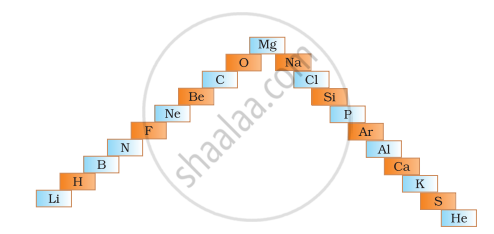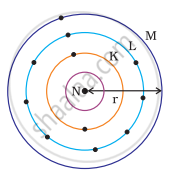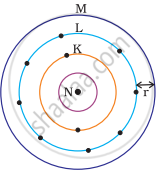Advertisements
Advertisements
Question
Give scientific reasons for the following:
Atomic radius goes on decreasing while going from left to right in a period.
Solution
- While going from left to right within a period, the atomic number increases one by one, meaning the positive charge on the nucleus increases by one unit at a time.
- However, the additional electron gets added to the same outermost shell. Due to the increased nuclear charge, the electrons are pulled towards the nucleus to a greater extent and thereby the size of the atom decreases.
APPEARS IN
RELATED QUESTIONS
Answer the following in respect of element `31/15 P `
Give its formula with chlorine?
Arrange the elements of second and third periods in increasing order of their atomic size (excluding noble gases).
Why is the size of neon greater than fluorine?
Which is greater in size an atom or an anion?
Which is greater in size Fe2+ or Fe3+?
With reference to the variation of properties in the Periodic Table, which of the following is generally true?
Atomic size increases from left to right across a period.
The changes in the properties of elements on moving from left to right across a period of the Periodic Table. For the property, choose the correct answer.
The atomic size:
While going from top to bottom in a group the atomic radius _______.
The size of an atom depends on the number of valence electrons.
Some elements and their atomic radii are given here. Arrange them in decreasing order of their atomic radii. Identify which of the above elements is the biggest atom and which is smallest?
| Element | K | Na | Rb | Cs | Li |
| Atomic radius (pm) | 231 | 186 | 244 | 262 | 151 |
Carbon belongs to the second period and Group 14. Silicon belongs to the third period and Group 14. If the atomic number of carbon is 6, the atomic number of silicon is ______
Which of the following is the correct order of atomic size?
Which of the following is the correct order of atomic size?
Which one of the following depict the correct representation of atomic radius(r) of an atom?
|
(i) |
(ii) |
|
(iii) |
(iv) |
Elements have been arranged in the following sequence on the basis of their increasing atomic masses.
| F, | Na, | Mg, | Al, | Si, | P, | S, | Cl, | Ar, | K |
- Pick two sets of elements which have similar properties.
- The given sequence represents which law of classification of elements?
Write the formula of the product formed when the element A (atomic number 19) combines with the element B (atomic number 17). Draw its electronic dot structure. What is the nature of the bond formed?
- In below ladder symbols of elements are jumbled up. Rearrange these symbols of elements in the increasing order of their atomic number in the Periodic Table.
- Arrange them in the order of their group also.

Arrange the following as per instruction given in the bracket.
Mg, Cl, Na, S, Si (decreasing order of atomic size)
Give reason for the following:
The size of a Cl− ion is greater than the size of a Cl atom.




